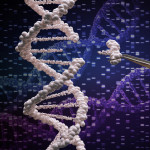A blood test that measures mitochondrial damage before it causes serious symptoms might one day serve as a crystal ball for HIVers on nucleoside analogue antiretrovirals, or nukes (NRTIs). This class of drugs can throw a monkey wrench into mitochondria, the cells’ energy factories, leading to damage to nerves (neuropathy), muscles (myopathy) and pancreas (pancreatitis). Nukes may even lead to that dastardly lactic acidosis (lactic-acid buildup in the blood), which can cause a wide range of symptoms including generalized fatigue, digestive, respiratory or neurologic symptoms. The problem with predicting such nasties has been that elevated lactate levels don’t perfectly parallel the development of problems.
Julio Montaner, MD, and his team at the British Columbia Centre for Excellence in HIV/AIDS, in Vancouver, may have a better idea. They used a PCR (polymerase chain reaction) blood test that calculates the level of mitochondrial DNA (mtDNA), as shown by the ratio of mtDNA to nuclear DNA (nDNA). Researchers tracked HAART-takers over the long haul and found not only that a downhill slide in mtDNA preceded increased lactate levels, but also that after no more nukes, mtDNA jumped back toward normal. The fortune-telling-test remains pie in the sky as it is not yet approved.







Comments
Comments